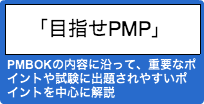CiscoルータのRIPの設定方法
RIPv1の設定
続いてはダイナミックルーティングの基礎、RIPv1の設定について解説していきます。
ダイナミックルーティングの設定は、スタティックルーティングの様な設定とは一味違い、まず各ルーティングプロトコルを有効にして、その後に細かな設定をしていく流れになります。
- router rip コマンドでRIPを有効にします。
Router(config)#router rip - networkコマンドでRIPを動作させるネットワークアドレスを指定します。
Router(config-router)#network [ネットワークアドレス]
以上のようにまず、router rip コマンドでRIPを動作させることから、始めます。
router rip コマンドを実行すると、ルータコンフィグレーションモードへと移行します。
その後に RIP に関する様々な設定をしていくことになります。
ここでは、以下のようなネットワークでRIPを設定してみましょう。
それぞれのルータの設定は以下のようになります。
RT–1の実行結果
RT-1#conf t
Enter configuration commands, one per line. End with CNTL/Z.
RT-1(config)#router rip
RT-1(config-router)#network 192.168.1.0
RT-1(config-router)#network 192.168.2.0
RT-1(config-router)#exit
RT-1(config)#exit
RT-1#RT–2の実行結果
RT-2#conf t
Enter configuration commands, one per line. End with CNTL/Z.
RT-2(config)#router rip
RT-2(config-router)#network 192.168.3.0
RT-2(config-router)#network 192.168.2.0
RT-21(config-router)#exit
RT-2(config)#exit
RT-2#それぞれのルーティングテーブルは以下のようになります。
RT–1の実行結果
RT-1#sh ip route
Codes: C - connected, S - static, I - IGRP, R - RIP, M - mobile, B - BGP
D - EIGRP, EX - EIGRP external, O - OSPF, IA - OSPF inter area
E1 - OSPF external type 1, E2 - OSPF external type 2, E - EGP
i - IS-IS, L1 - IS-IS level-1, L2 - IS-IS level-2, * - candidate default
U - per-user static route
Gateway of last resort is not set
192.168.2.0/24 is subnetted, 1 subnets
C 192.168.2.0 is directly connected, Serial0
192.168.1.0/24 is subnetted, 1 subnets
C 192.168.1.0 is directly connected, Ethernet0
192.168.3.0/24 is subnetted, 1 subnets
R 192.168.3.0 [120/1] via 192.168.2.2, 00:03:32, Serial0RT–2の実行結果
RT-2#sh ip route
Codes: C - connected, S - static, I - IGRP, R - RIP, M - mobile, B - BGP
D - EIGRP, EX - EIGRP external, O - OSPF, IA - OSPF inter area
E1 - OSPF external type 1, E2 - OSPF external type 2, E - EGP
i - IS-IS, L1 - IS-IS level-1, L2 - IS-IS level-2, * - candidate default
U - per-user static route
Gateway of last resort is not set
192.168.3.0/24 is subnetted, 1 subnets
C 192.168.3.0 is directly connected, Ethernet0
192.168.2.0/24 is subnetted, 1 subnets
C 192.168.2.0 is directly connected, Serial0
192.168.1.0/24 is subnetted, 1 subnets
R 192.168.1.0 [120/1] via 192.168.2.1, 00:02:24, Serial0RIP設定時の注意点
ここでRIPの設定をする上で、もっとも注意しなければいけない点を
書いておきましょう。
RIPの特徴であり、欠点でもある点を思い出してください。
RIPはクラスフル、つまりサブネットマスクを意識しないという欠点がありましたよね。
ですからnetworkコマンドで設定するネットワークは必ずクラスフルで記述します。
設定するネットワークが 172.16.1.0 、であった場合は、
RT-1(config-router)#network 172.16.0.0とクラスBのネットワークで記述します。
仮に
RT-1(config-router)#network 172.16.1.0と設定してしまった場合はどうなるのでしょう?
この場合でも設定は受け付けてくれますが、ルータが自動的に適切なクラスの設定に変更してくれます。
router1#conf t
router1(config)#router rip
router1(config-router)#network 172.16.1.0
router1(config-router)#end
router1#
router1#sh run
~省略~
router rip
network 172.16.0.0
~省略~RIPv2の設定
ここまではRIPv1の設定について解説してきました。
では、RIPv2の設定はどうやるのでしょう?
RIPv1の設定を理解していれば、とても簡単です。
以下がRIPv2の設定の流れです。
- router rip コマンドでRIPを有効にします。
Router(config)#router rip - RIPv2として動作せるように設定します。
Router(config-router)#version 2 - networkコマンドでRIPを動作させるネットワークアドレスを指定します。
Router(config-router)#network [ネットワークアドレス]
ルータ上で動作しているルーティングプロトコルを見る
実際に設定した後に、ルータ上で動作しているルーティングプロトコルを確認するには以下のコマンドで確認できます。
router#show ip protocolsRIPv1を動作させているルータの場合は、
コマンド実行結果
router1#sh ip protocols
Routing Protocol is "rip"
Sending updates every 30 seconds
Invalid after 180 seconds, hold down 180, flushed after 240
Outgoing update filter list for all interfaces is not set
Incoming update filter list for all interfaces is not set
Redistributing: rip
Default version control: send version 1, receive any version
Interface Send Recv Triggered RIP Key-chain
Ethernet0/0 1 1 2
#送信するプロトコルはRIPv1で、受信はRIPv1,2の両方を
受信してくれることが分かります。
Automatic network summarization is in effect
Maximum path: 4
Routing for Networks:
192.168.1.0
192.168.2.0
Routing Information Sources:
192.168.2.2 120 00:00:09
Distance: (default is 120)RIPv2の設定をしている場合は、
コマンド実行結果
router1#sh ip protocols
Routing Protocol is "rip"
Sending updates every 30 seconds, next due in 8 seconds
Invalid after 180 seconds, hold down 180, flushed after 240
Outgoing update filter list for all interfaces is
Incoming update filter list for all interfaces is
Redistributing: rip
Default version control: send version 2, receive version 2
Interface Send Recv Triggered RIP Key-chain
Ethernet0/0 2 2
#送信、受信ともにRIPv2になっています。
Automatic network summarization is in effect
Routing for Networks:
192.168.1.0
192.168.2.0
Routing Information Sources:
192.168.2.2 120 00:00:09
Distance: (default is 120)となります。
実際にルーティングプロトコルを設定した後に、動作しているかを確認する際に便利なコマンドです。
関連記事
メールマガジン
ネットワ-ク初心者のみなさま。
ネットワークの基礎知識を疎かにすることは
大変危険です!!
これを読めばネットワークの基礎が分かる!!
ネットワーク関連の仕事に就きたいとお考えの学生の方や、ネットワークに興味があって転職を考えている社会人の方、まずは登録してみてください。
もちろん無料です!!
↓メールマガジン購読はこちら↓





